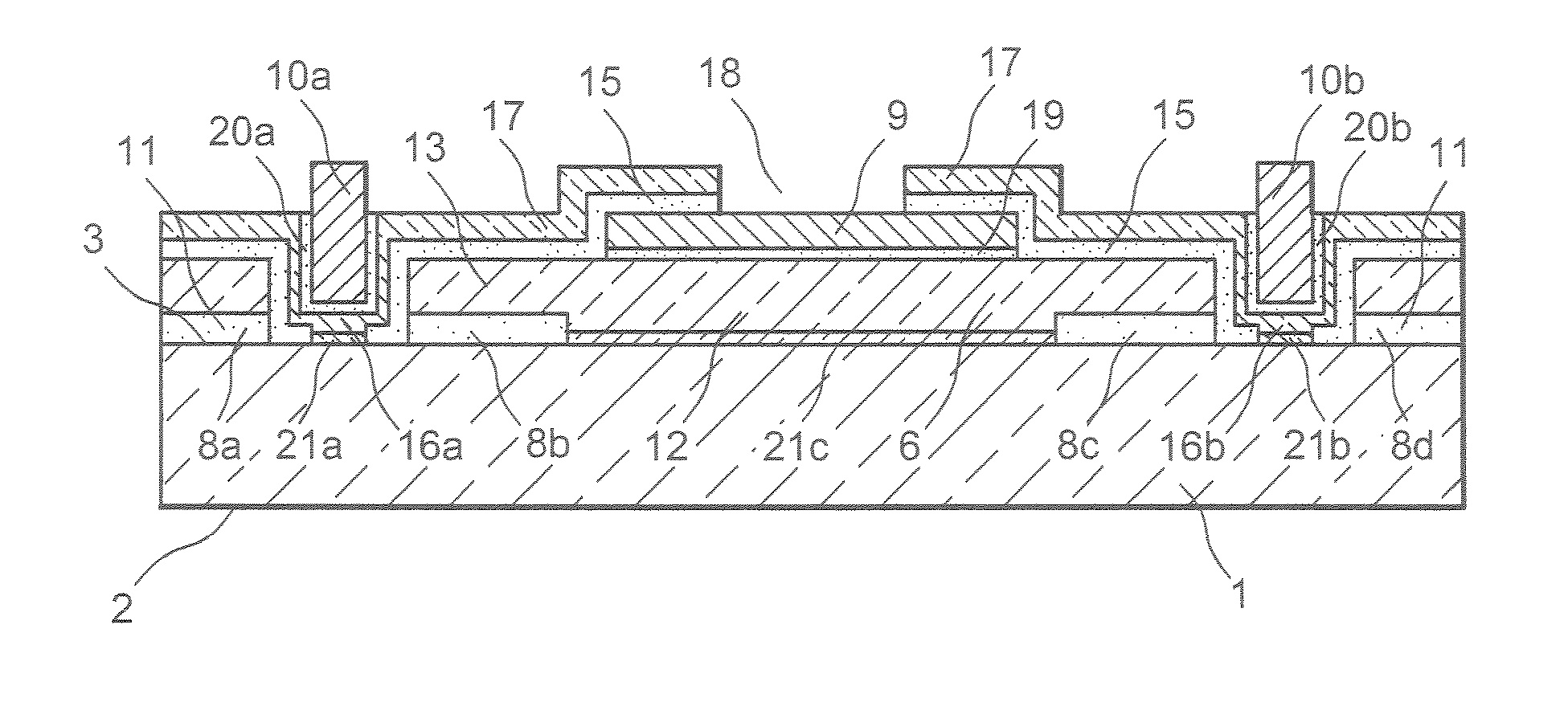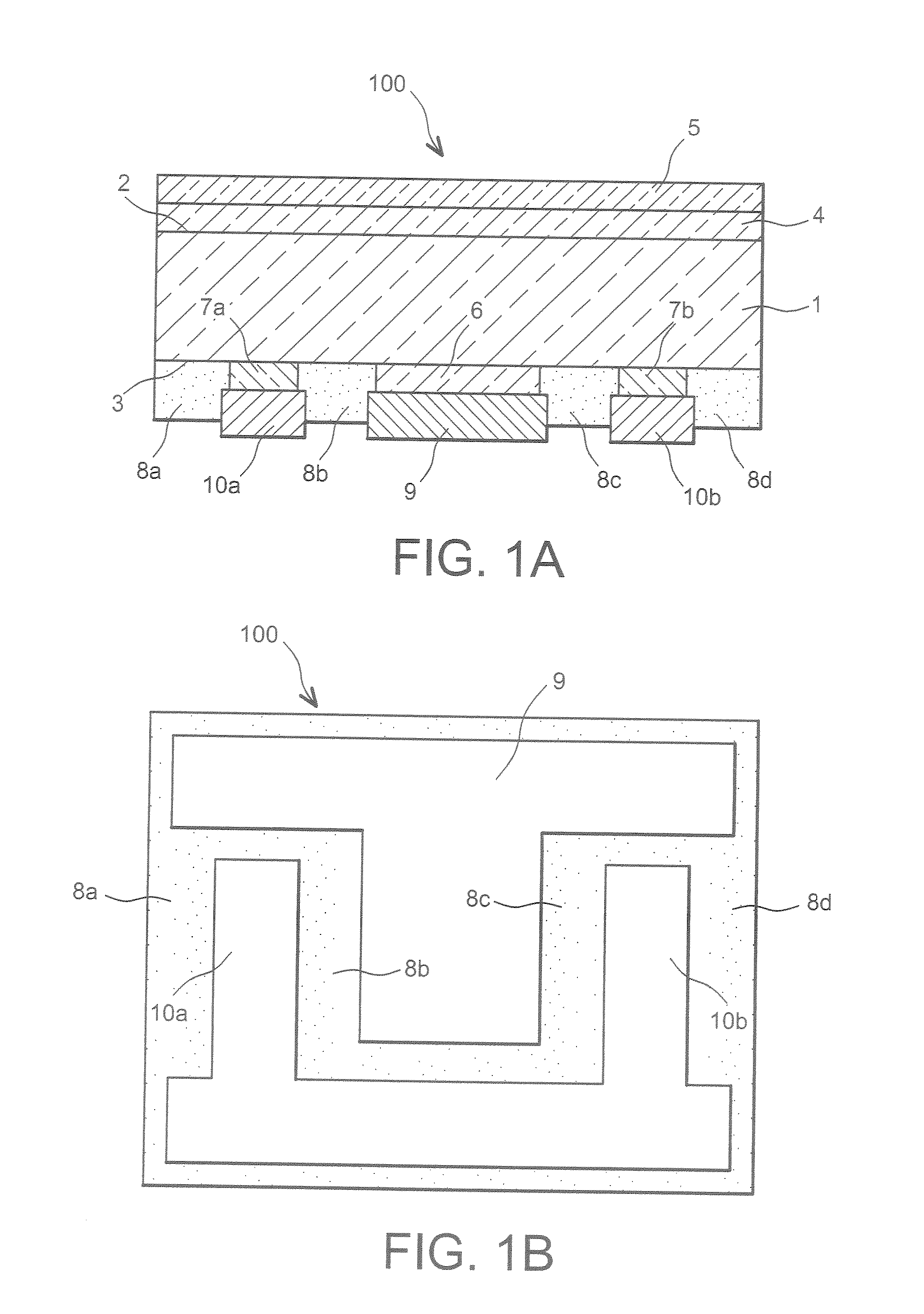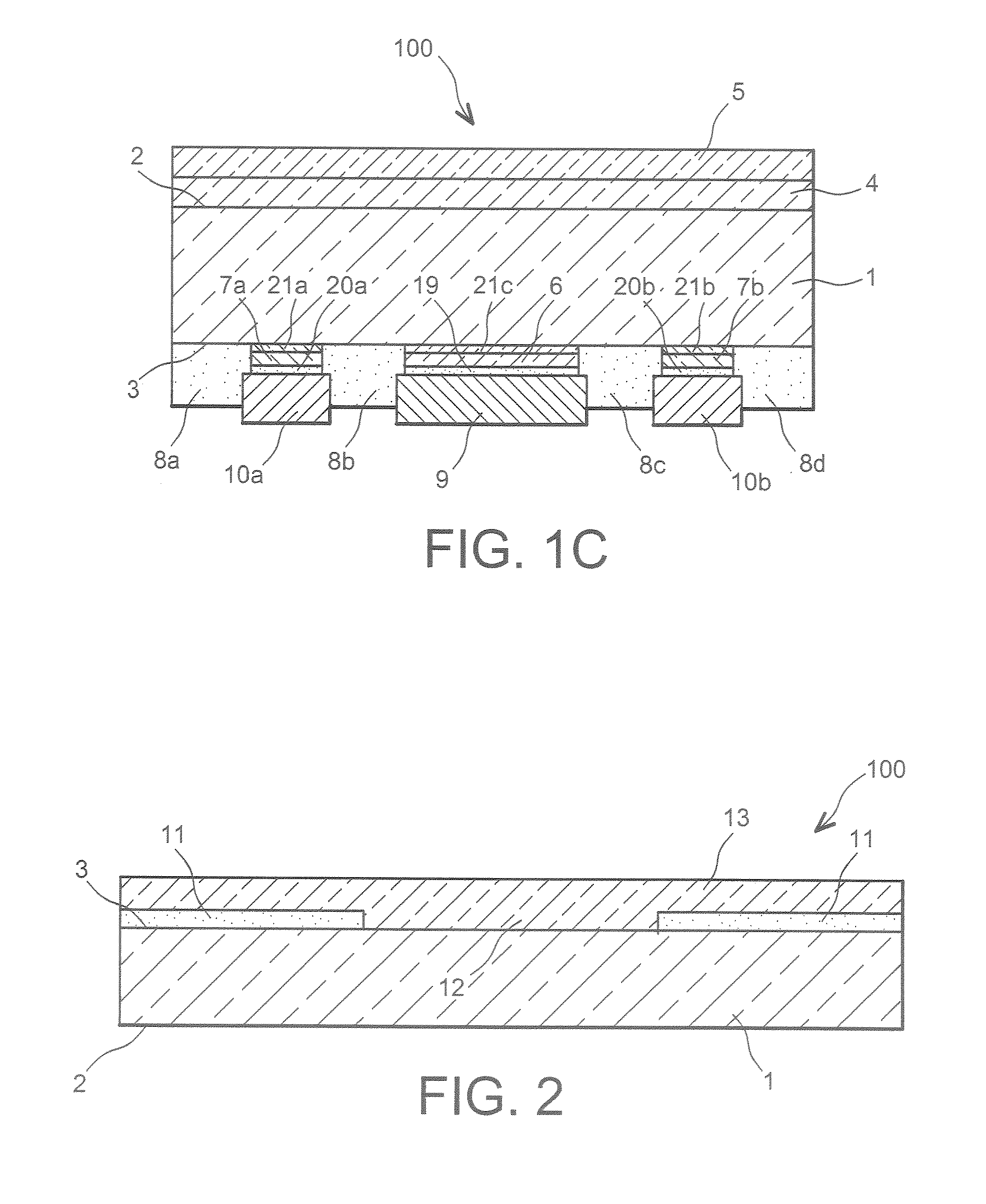Semiconductor Device with Heterojunctions and an Inter-Finger Structure
a technology of heterojunction and semiconductor, applied in the direction of photovoltaic energy generation, electrical equipment, climate sustainability, etc., can solve the problems of high thermal budget used during the production process, unsuitable for obtaining low-cost solar cells, and high cost of materials
- Summary
- Abstract
- Description
- Claims
- Application Information
AI Technical Summary
Benefits of technology
Problems solved by technology
Method used
Image
Examples
Embodiment Construction
[0017] This invention is intended to propose a semiconductor device with heterojunctions, which does not have the disadvantage mentioned above, namely that of being limited by a connection structure including an electrode on two main opposite surfaces of the device, and which proposes a simpler and more electrically-insulated structure than the existing semiconductor devices with an interdigitated structure.
[0018] To achieve these objectives, this invention proposes a semiconductor device comprising, on at least one surface of a crystalline semiconductor substrate, at least one first amorphous semiconductor region doped with a first type of conductivity, which semiconductor substrate comprises, on the same surface, at least one second amorphous semiconductor region doped with a second type of conductivity, opposite the first type of conductivity, wherein the first amorphous semiconductor region, insulated from the second amorphous semiconductor region by at least one dielectric reg...
PUM
 Login to View More
Login to View More Abstract
Description
Claims
Application Information
 Login to View More
Login to View More - R&D
- Intellectual Property
- Life Sciences
- Materials
- Tech Scout
- Unparalleled Data Quality
- Higher Quality Content
- 60% Fewer Hallucinations
Browse by: Latest US Patents, China's latest patents, Technical Efficacy Thesaurus, Application Domain, Technology Topic, Popular Technical Reports.
© 2025 PatSnap. All rights reserved.Legal|Privacy policy|Modern Slavery Act Transparency Statement|Sitemap|About US| Contact US: help@patsnap.com



